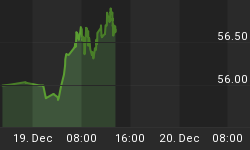
Is it the height of naiveté for me to continue to believe that if the Fed stepped away from additional rounds of quantitative easing here, it would provide the most bang for the buck by continuing the precipitous decline of energy and commodity costs to the worlds largest economy?
Or is the threat of deflation to any asset class too risky a gamble for the Fed to take?
At this point in the recovery and considering consumer spending makes up 2/3 of the US economy - it's Main Street that needs the most help right now, no?
Banks - Saved - Check.
Corporations - Saved - Check.
Consumers - Help!
I am sure that the designers of quantitative easing did not foresee that by indiscriminately stimulating risk during a commodity bull market that they could in fact control the mechanism that would deflate the cycle just when the economy needed it most. What I mean by that rather convoluted statement is quantitative easing was certainly an imperfect transmission vehicle for restoring confidence or risk appetite back into the financial system during the crisis. It failed if you measured its efficacy along the lines of stimulating lending to Main Street in what was certainly a deflationary and de-leveraging environment in 2009. It was a hail mary pass for all intents and purposes, but it could still find the end zone through a series of unintentional fumbles, creative footwork and accommodative officiating.
Let's just call it luck.
Our economy through tremendous gains in productivity (and accounting) has transitioned to profitability at such a historically high petroleum and commodity cost multiplier, that by dialing energy and commodity prices lower here through the relative tightening of monetary policy could in fact provide the most comprehensive stimulus to the economy and the consumer - just when the Fed was perceived to have no additional rounds left in the chamber. To think that even five years ago before the financial crisis hit, that the US economy would be able to maintain the degree of profitability it has exhibited today (with over 9% unemployment, a 12% output gap and until lat week - $100 oil) would have been perceived as pure academic fiction. No economist in their right mind would have believed that these economic conditions could have produce such results.
And yet here we stand with corporate profits at all time highs and corporate balance sheets in the best shape in a generation. The latter was a direct result of quantitative easing maintaining confidence in the financial system and directing corporations to the issuance trough to restore their balance sheets at historically low interest rates. This has only been realized because of the good fortune of where we sit in the long term interest rate cycle (see chart) and the Fed becoming the lender of last resort through QE. If the crisis had occurred during the 1970's where inflation expectations where on the upswing, Bernanke's Frankenstein monetary experiments would have gone terribly wrong from the outset.

Fortunately, and as personified in the extraordinary yield environment - inflation expectations are still on the benevolent backside of the interest rate cycle (see Here) - and as exhibited by this week's impressive relative strength of the US Treasury market in the face of their first downgrade by a major ratings agency.
My hope is that Bernanke is not scared once again to the monetary alter and realizes that he still holds a few powerful rounds in the psychological chamber of market influence.
The greatest trick the devil ever pulled was convincing the world that he didn't exist. And like that - poof, he's gone. - Kayser Soze
Positions in UUP, GLL & TNA
I just joined Twitter. All my trades and occasional market musings are disclosed in real-time here.















